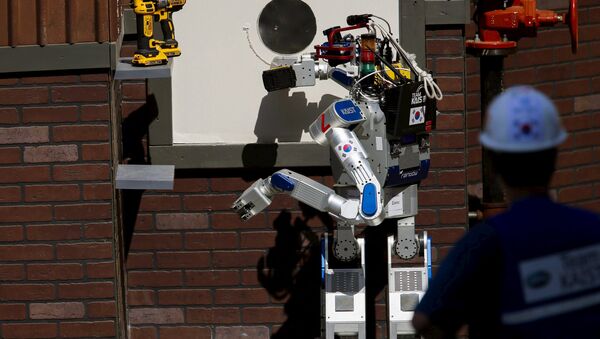They may be powerful, they may perform the tasks they were made to do with great efficiency, but they will never be able to do anything more than that.
But is it possible to “train” a robot to do something it wasn’t initially destined to do? The question arose only when a new generation of robots could be created, thanks to the rising new field of computer science.
Computerization created a whole new world of machines which could be operated not through mechanical servos and gears, but through analog and digital electronics. The complexity of operations performed by these machines increased immensely. Previously automatons were severely limited in what they could do by the logic which was, essentially, programmed with hardware parts, hidden within their frames. Computers eliminated this need and allowed for extreme miniaturization. But that was just the first step.
Humans being able to program such machines is good. Machines being able to program themselves is better – robot learning. Self-learning machines – how awesome would that be? In fact, it already exists – to a point. First we must develop machine learning on a software level – and from then on it’s relatively simple to adapt this software to interact with the outside world through hardware.
In reality, applications are limitless. From prediction of economic movements to speech and handwriting recognition, to study of paintings and finding influence of various artists on each other to learning how to walk. You’ve probably seen some of the results of the latest Google’s “Deep Dream," software. Essentially it sees certain patterns or objects on images available online and tries to make them more pronounced, which results in often surreal images. Scientists from Stanford University developed a similar program called NeuralTalk, capable of analyzing images and describing them with eerily accurate sentences. In 2014 Steve Ballmer, the former CEO of Microsoft, told Computerworld:
I think it's the dawn of an exciting new era of info and computer science. It's a new world in which the ability to understand the world and people and draw conclusions will be really quite remarkable… It's a fundamentally different way of doing computer science. It's not about just putting in input and getting an answer. Computer science evolves and changes. This is going to be a fundamental area.
By the way, robots learning themselves is, while a possibility, perhaps not the most likely or soon scenario. Using robots to teach humans is another thing. Daniel H. Wilson, author and robotics engineer, said:
Looking ahead, future generations may learn their social skills from robots in the first place. The cute yellow Keepon robot from Carnegie Mellon University has shown the ability to facilitate social interactions with autistic children. Morphy at the University of Washington happily teaches gestures to children by demonstration.
Robotic teachers and self-taught bipedal walking androids are still something from science fiction, sure. But it would be careless to say that we’re not moving in the direction of making them a reality.

